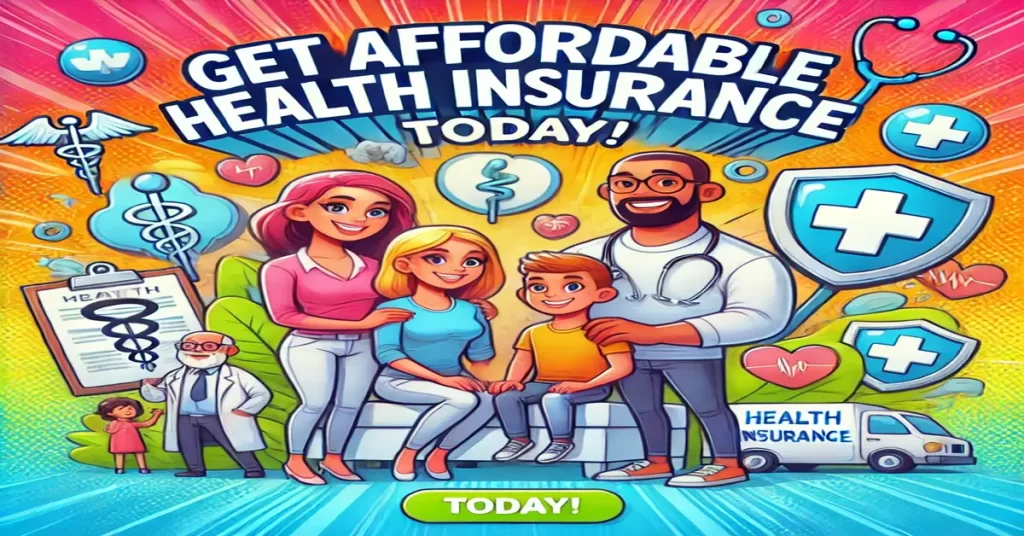
Affordable Health Insurance: Your Complete Guide to Getting the Best Coverage in 2024
If you’re looking for health insurance that won’t break the bank, you’re not alone. Affordable health insurance options in 2024 are more accessible than ever, thanks to government programs, subsidies, and private insurance plans that cater to individuals with varying needs and budgets. The key to finding the right plan is understanding your options, knowing where to look, and maximizing savings through subsidies or discounts.
Table of Contents
- What is Affordable Health Insurance?
- Types of Affordable Health Insurance Plans
- How to Qualify for Subsidies and Discounts
- How to Choose the Right Affordable Health Insurance
- FAQ:
What is Affordable Health Insurance?
Affordable health insurance refers to any plan that offers comprehensive coverage at a price that fits within your budget. For many, it means finding a plan with low monthly premiums, reasonable out-of-pocket costs, and coverage for essential health benefits, including doctor visits, prescriptions, and hospital stays.
The Affordable Care Act (ACA) has expanded access to health insurance in the U.S. through Health Insurance Marketplaces. These platforms allow you to compare plans based on coverage, price, and eligibility for subsidies.
Types of Affordable Health Insurance Plans
1. ACA Marketplace Plans (Health Insurance Exchange)
The ACA Marketplace offers a variety of affordable health plans for individuals and families. Depending on your income, you may qualify for premium tax credits and cost-sharing reductions that significantly reduce costs.
- Metal Tiers: Plans are divided into Bronze, Silver, Gold, and Platinum categories, with bronze plans generally having the lowest premiums but higher out-of-pocket costs.
- Who is it for? Individuals, families, and self-employed individuals seeking affordable coverage.
- Pros: Availability of subsidies covers essential health benefits.
- Cons: Higher deductibles with lower-tier plans.
2. Medicaid
Medicaid is a federal and state program that provides free or low-cost health coverage to low-income individuals, families, pregnant women, the elderly, and people with disabilities. Income eligibility varies by state, but the expansion under the ACA made more people eligible.
- Who is it for? Low-income individuals and families.
- Pros: Comprehensive coverage at little or no cost.
- Cons: Eligibility varies by state.
3. Children’s Health Insurance Program (CHIP)
CHIP provides affordable health insurance for children in families that earn too much to qualify for Medicaid but can’t afford private insurance.
- Who is it for? Children and pregnant women in low-to-moderate income families.
- Pros: Low-cost coverage, extensive pediatric care.
- Cons: Available only to certain income brackets.
4. Catastrophic Health Insurance
Catastrophic plans have low premiums but very high deductibles. These plans are designed to provide coverage in case of serious illness or injury but offer limited benefits for routine care.
- Who is it for? Individuals under 30 or those with a hardship or affordability exemption.
- Pros: Very low premiums.
- Cons: High out-of-pocket costs before the plan begins to pay.
5. Short-Term Health Insurance
Short-term health insurance offers limited coverage for a brief period (up to 12 months, with possible renewals). These plans are often less expensive than ACA-compliant plans but may not cover essential health benefits.
- Who is it for? People who are between jobs, waiting for ACA coverage to begin, or need temporary coverage.
- Pros: Affordable premiums.
- Cons: Limited benefits don’t cover pre-existing conditions.
How to Qualify for Subsidies and Discounts
Premium Tax Credits (Subsidies)
The Premium Tax Credit is a subsidy that helps lower your monthly insurance premiums if you buy a plan through the ACA Marketplace and your income falls between 100% and 400% of the federal poverty level (FPL).
Cost-Sharing Reductions
For individuals with income between 100% and 250% of the FPL, Cost-Sharing Reductions (CSRs) help lower out-of-pocket costs such as deductibles, copayments, and coinsurance when you choose a silver plan on the ACA Marketplace.
Medicaid and CHIP Eligibility
If your income is below a certain threshold, you may qualify for Medicaid or CHIP. The thresholds vary by state, but many states have expanded Medicaid to cover individuals making up to 138% of the FPL.
How to Choose the Right Affordable Health Insurance
1. Assess Your Health Needs
Start by evaluating how often you visit the doctor, whether you need prescriptions, and any anticipated health care needs for the coming year. This will help you decide between a plan with low premiums and higher out-of-pocket costs, or one with higher premiums and lower out-of-pocket expenses.
2. Compare Marketplace Plans
Use the ACA Marketplace to compare plans in your area. Pay attention to:
- Premiums: The monthly cost of the plan.
- Deductibles: How much you pay before the insurance kicks in.
- Copays and Coinsurance: Your share of the cost for services.
- Out-of-Pocket Maximums: The most you’ll pay in a year.
3. Check for Eligibility for Subsidies
Make sure to check if you’re eligible for premium tax credits or cost-sharing reductions, which can lower your overall health insurance costs.
4. Don’t Forget About Additional Benefits
Some plans may offer additional benefits such as dental, vision, or wellness programs. Make sure to factor these into your decision-making process if they are important to you.
FAQ:
What is the cheapest health insurance plan I can get?
The cheapest health insurance option will depend on your income and eligibility. If you qualify, Medicaid or CHIP are usually the least expensive, offering low-cost or no-cost coverage. For those who don’t qualify, a bronze ACA plan or catastrophic insurance might be the most affordable.
How do I qualify for a subsidy?
You can qualify for a Premium Tax Credit if your income is between 100% and 400% of the federal poverty level and you purchase insurance through the Health Insurance Marketplace. Use the Marketplace calculator to see if you’re eligible for assistance.
Can I get affordable health insurance without a job?
Yes, you can still get affordable health insurance if you’re unemployed. Depending on your income, you may qualify for Medicaid, CHIP, or subsidized ACA plans. Some states have special enrollment periods for those who have lost their jobs.
Do I need health insurance if I’m young and healthy?
Even if you’re young and healthy, having health insurance can protect you financially from unexpected medical bills. Catastrophic insurance or a bronze plan might be a good, low-cost option for you.
Conclusion
By exploring your options and carefully comparing plans, you can find an affordable health insurance plan that fits your needs in 2024. With government subsidies, ACA Marketplace options, and state programs like Medicaid and CHIP, there’s a plan for everyone, no matter your financial situation.
For more information and to compare plans, visit the HealthCare.gov website or contact a local health insurance agent.










